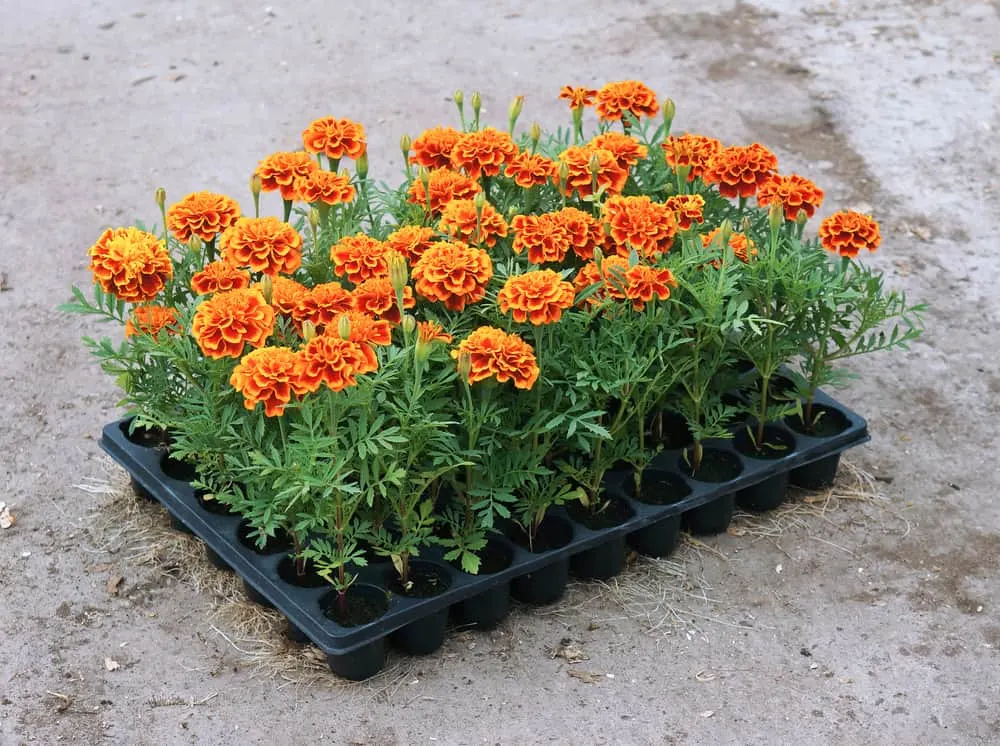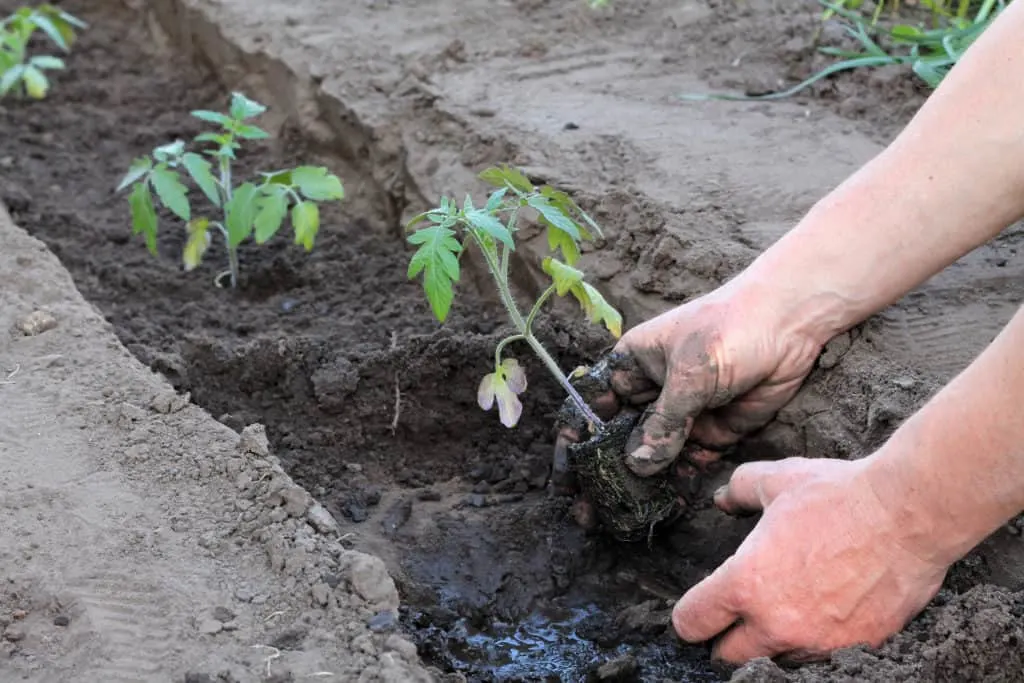
You’ve probably come across the common gardening advice arguing that planting tomatoes deeply is an absolute must.
It seems to go against all gardening instincts – especially when proponents recommend the leaves should be buried too.
But, as strange as it may sound, this piece of advice is absolutely true.
Although it is widely circulated across the internet and in gardening circles, there is often an important omission – why should you plant tomatoes deep? And how deep should you plant?
We’re going to break it down.
You may have also heard of the trick to plant your tomatoes sideways.
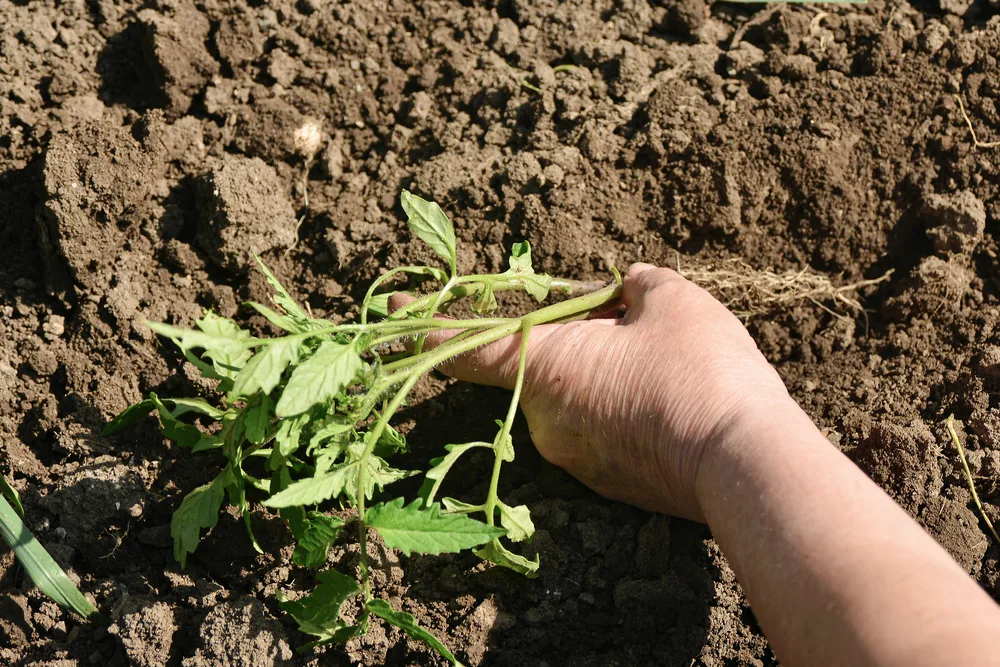
This may seem even more bizarre but there’s a really good reason for it. We’ll discuss that later on, too.
Why You Should Plant Tomatoes Deeply
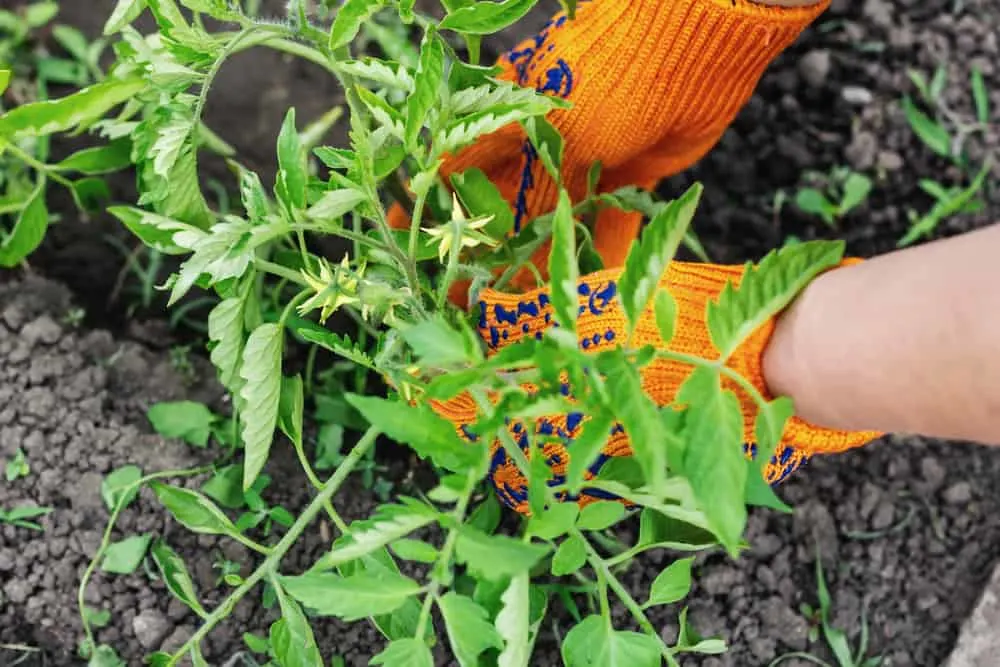
Most plants should be planted in a hole slightly larger than the size of the pot they came in. That is not the case for tomatoes. But why?
It’s all in the roots.
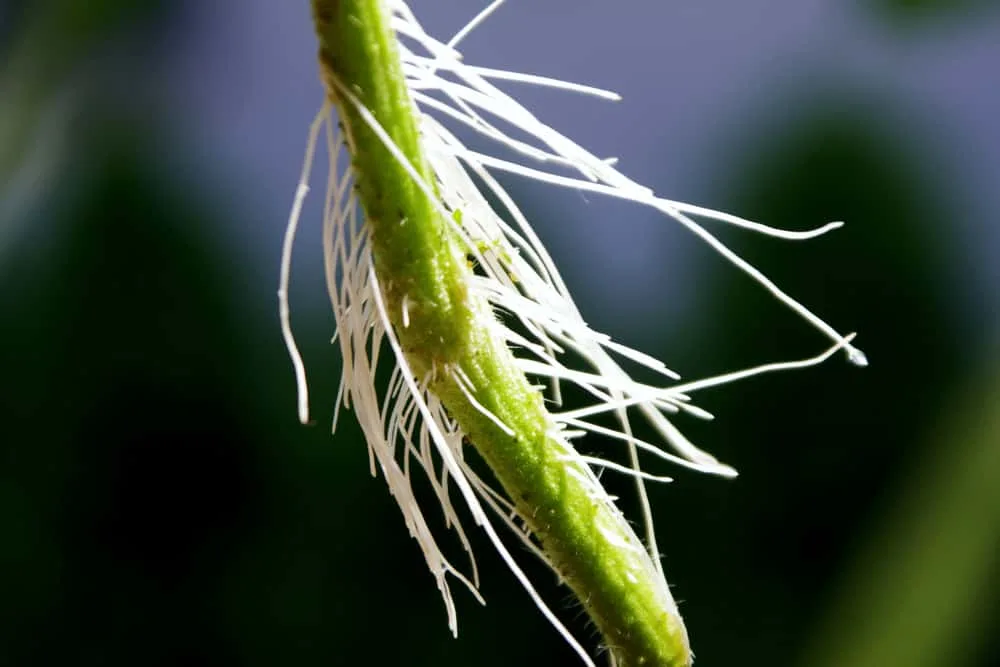
Tomatoes have adventitious roots (roots that form from non-root tissue). This means they have the ability to grow more roots along their stems at any point where the stem is buried.
Hence, the advice follows that you should bury the plant deeply – it will develop a larger, stronger root system along the stem.
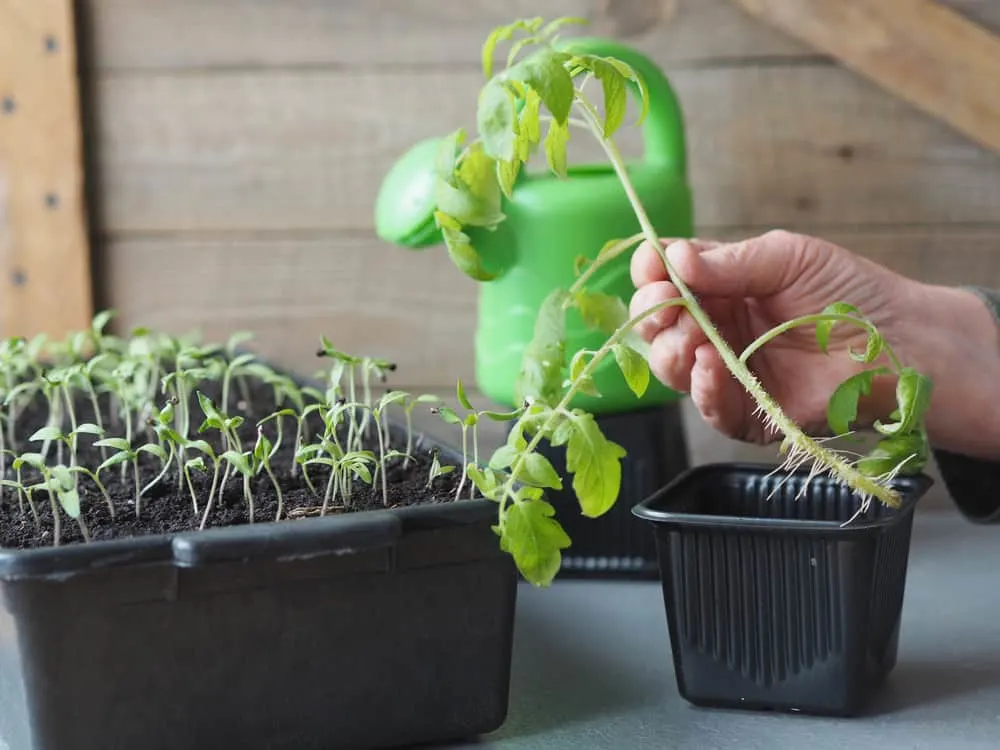
The more roots there are, the more nutrients and water the tomato will be able to absorb. The extra roots also create a stronger anchor in the soil, helping the plant stay upright under wind pressure.
Even better, having most of the plant underground right after planting will protect it from early spring frost and cold weather.
All this will lead to a healthier, stronger, larger fruit-bearing tomato plant.
How To Plant Tomatoes Deeply
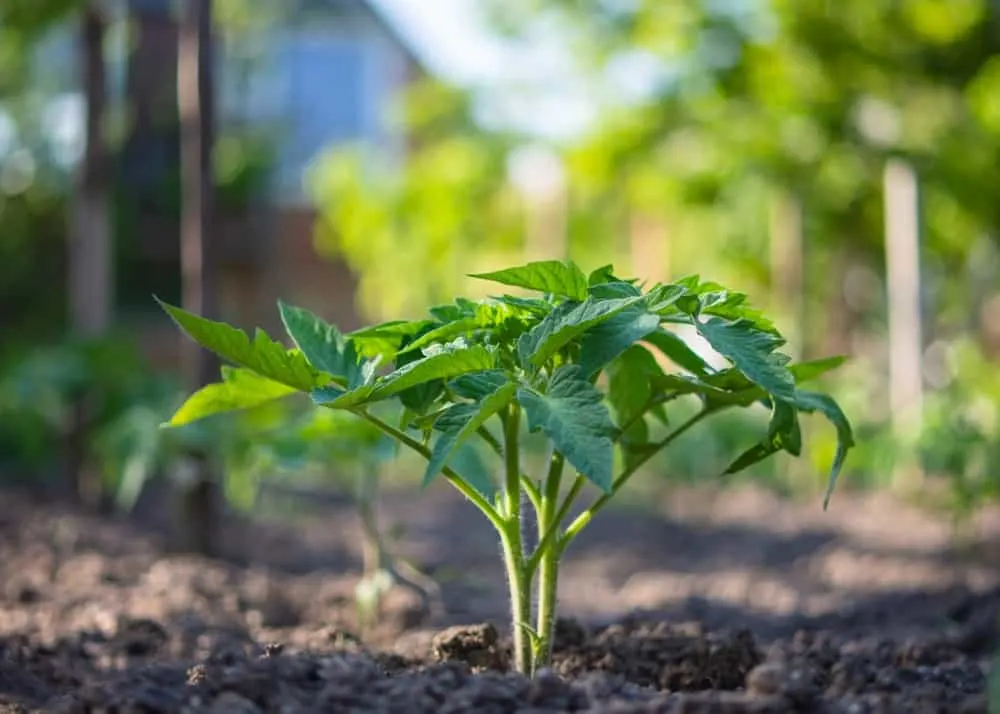
Measure and prepare the plant
You’ll want to bury about two-thirds of your tomato plant, including the main root ball, to take full advantage of those adventitious roots.
The height of your plant determines the size of your hole or trench you dig.
Measure the plant first to ensure you make the hole big enough before planting – it’s likely to be deeper than you think.
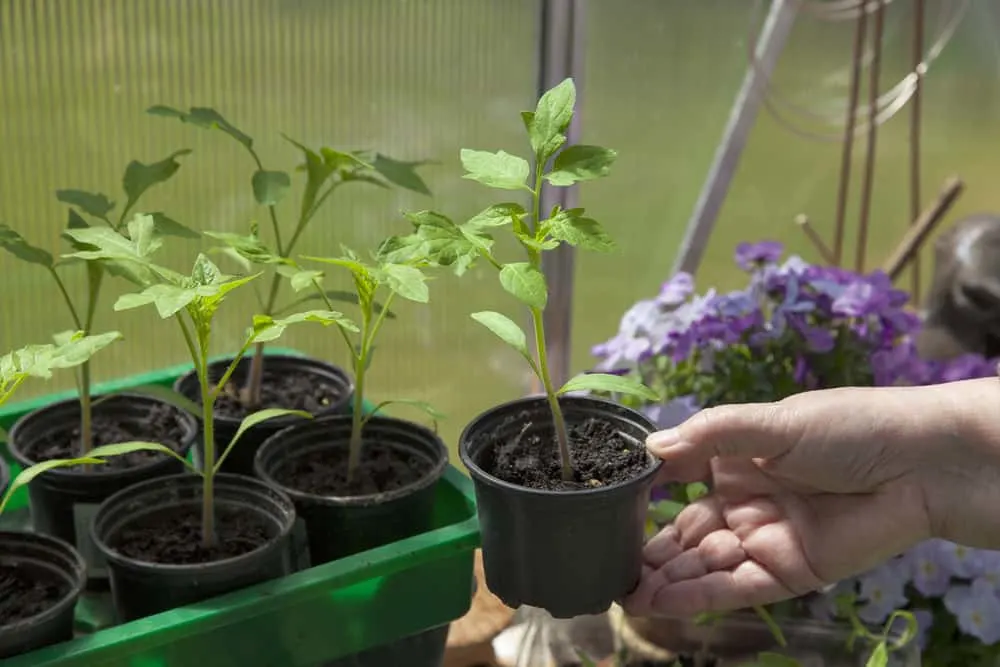
The best time to bury the tomato plant is when the seedling has grown to about six to twelve inches.
Removing the lower leaves and stems isn’t important – they can simply be buried with the rest of the plant. However, you’re welcome to remove them if it will make planting easier, depending on the size and shape of your transplant.
Be careful not to snap the main stem if you do remove any leaves from the plant.
Prepare the soil
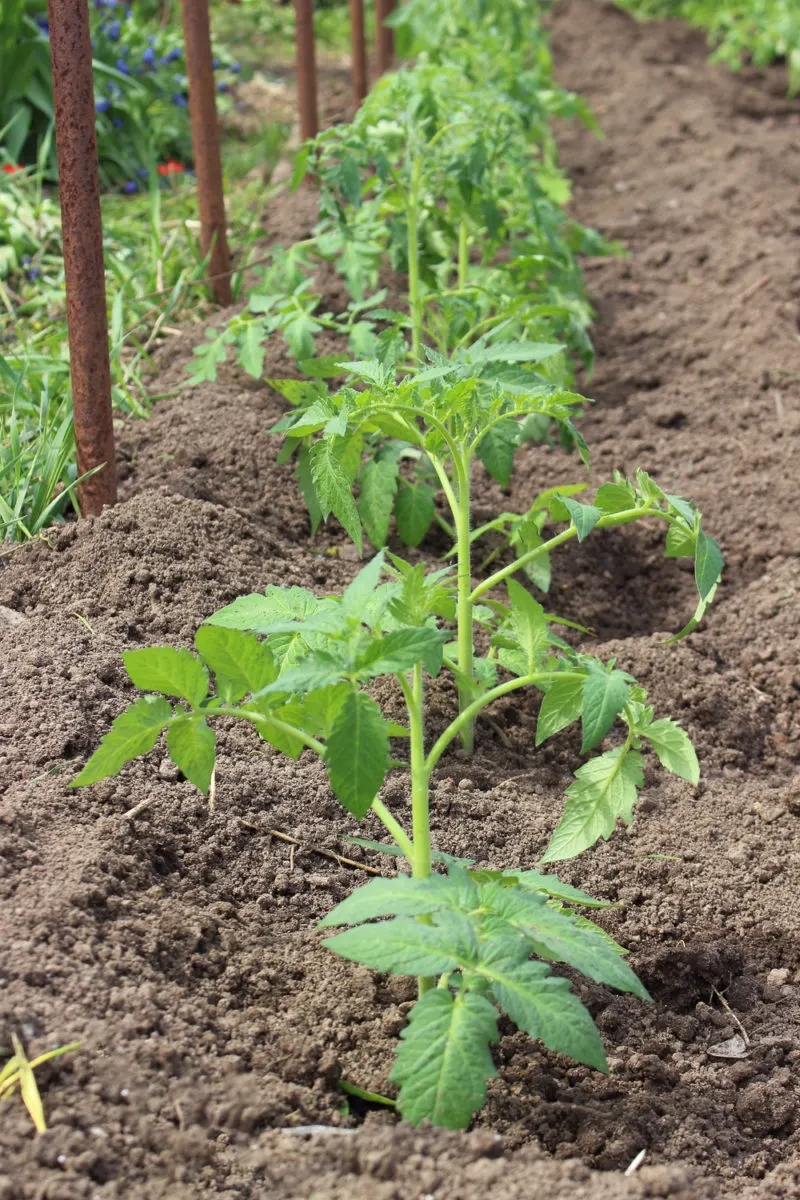
Make sure that the soil is not hard or compacted. The new root system won’t be able to grow in and penetrate through compacted soil, making the process of planting deep futile.
Add soil amendments, like compost, to prepare and loosen your soil (the added nutrients won’t hurt either).
Related Reading: 5 Things To Put In Your Tomato Planting Hole (& 5 Things You Shouldn’t)
Dig
There are two methods when deep-planting tomatoes: the hole method and the trench method to plant sideways.
The Deep Hole Method
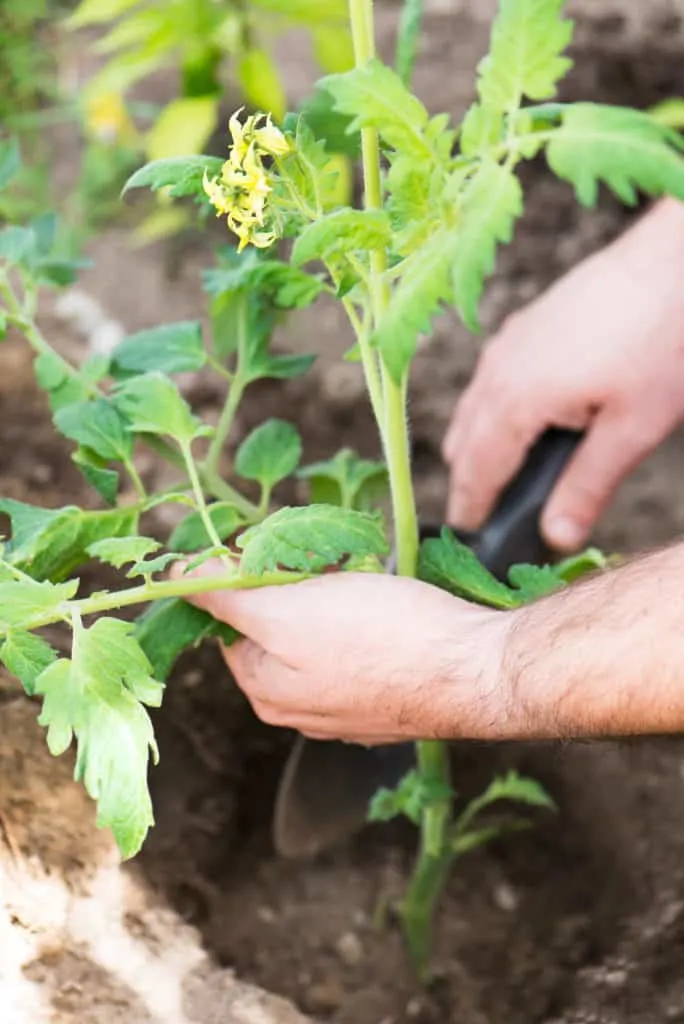
The deep hole method is the most common, but it can be difficult in heavy soil. The hole should be deep enough for most of the stem, up to just below the top set of leaves, to be buried.
This should be about two-thirds of the plant, including the main root ball. Gently loosen the roots, place the plant in the hole, and fill with soil up to the soil line.
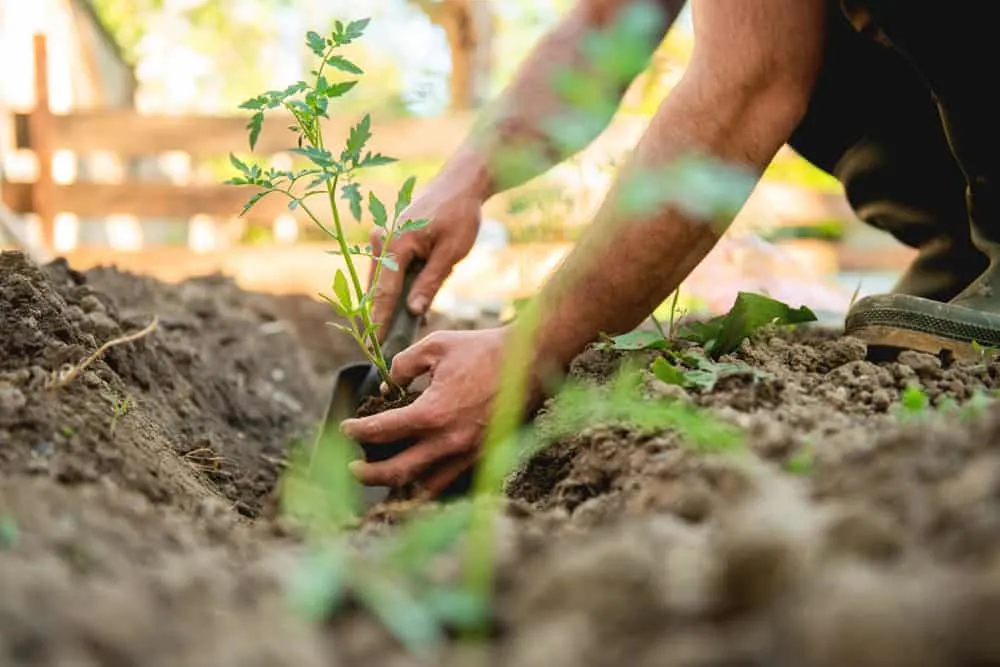
Trench Method – Planting Sideways
The trench method is ideal if your soil is a little too heavy, or if you can’t dig a hole deep enough to accommodate the full two-thirds of the tomato plant. Plus, there’s the added benefit of the warmth of the upper soil along the stem, which facilitates faster growth.
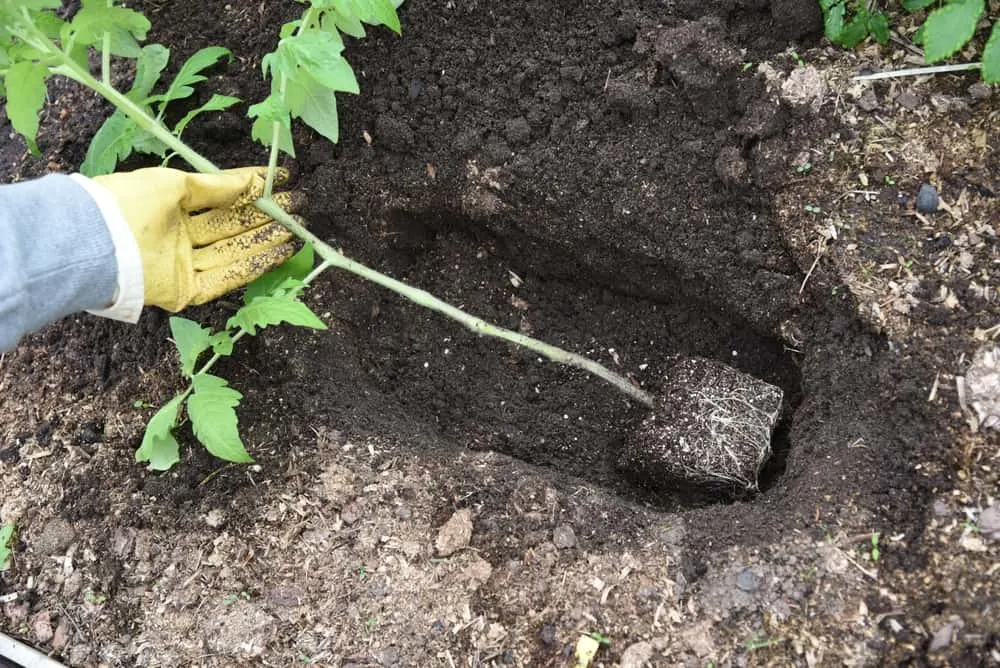
The trench needs to be approximately six inches deep, with a length equivalent to two-thirds of the tomato plant height. Lay the tomato plant on its side at a slight angle so the top leaves are exposed, filling with soil around the stem.
Don’t worry that the exposed part of the plant is not upright; the stem will soon travel upwards with more exposure to the sun.
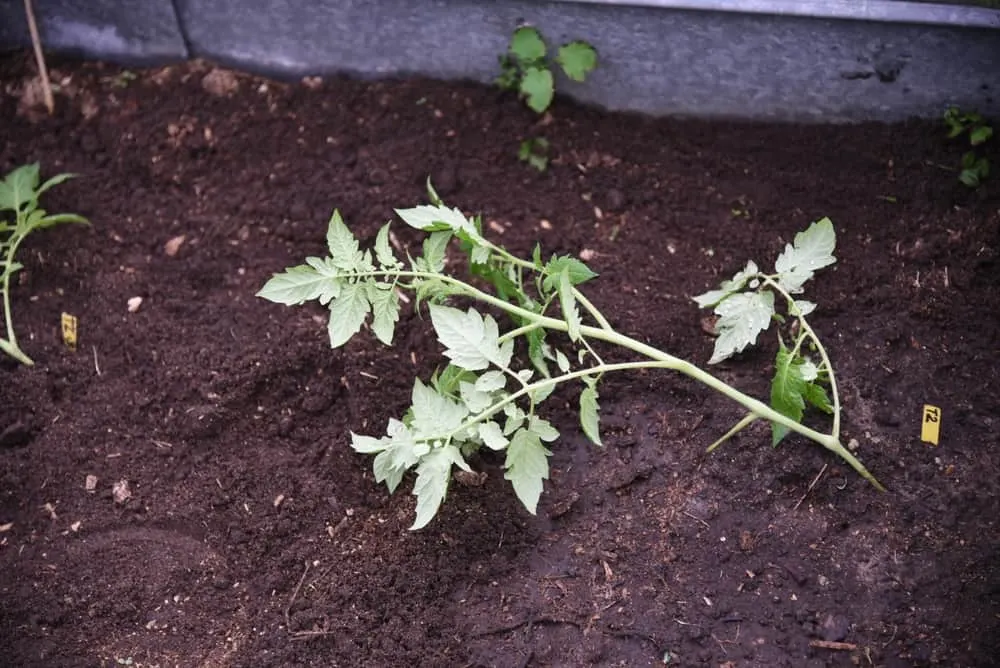
Place supports
Depending on your tomato variety, you may need to add supports to prop up the plant and help it grow up upright. Placing supports early will help avoid root disturbance at a later stage. Install a stake or cage next to the root ball, carefully, to avoid damage.
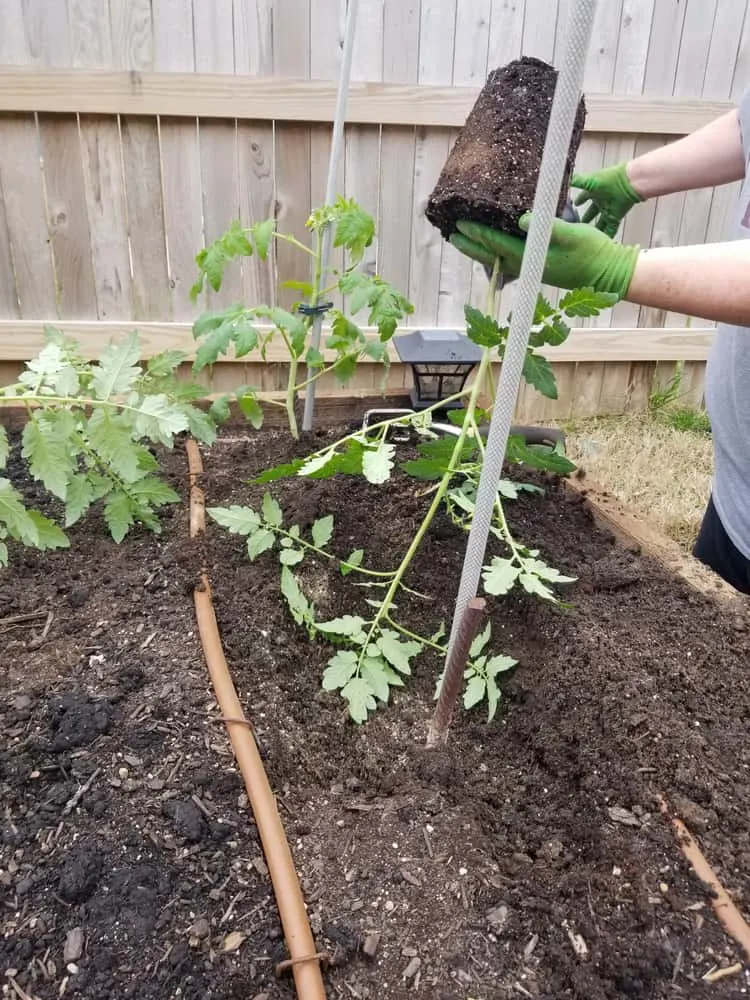
When using the trench planting method, either wait until the plant has grown upright before placing supports like cages, or install a stake next to the horizontal stem and wait for it to straighten out before tying the stem to the stake. This will prevent any potential snapping of the main stem that may damage or kill the plant.
Water thoroughly
Water slowly and deeply after planting. Watering deeply encourages roots to grow and extend downwards – this is exactly what you want to reap the benefits of planting tomatoes deep. Make sure to water well throughout the growing season to keep up the strong, healthy root system.
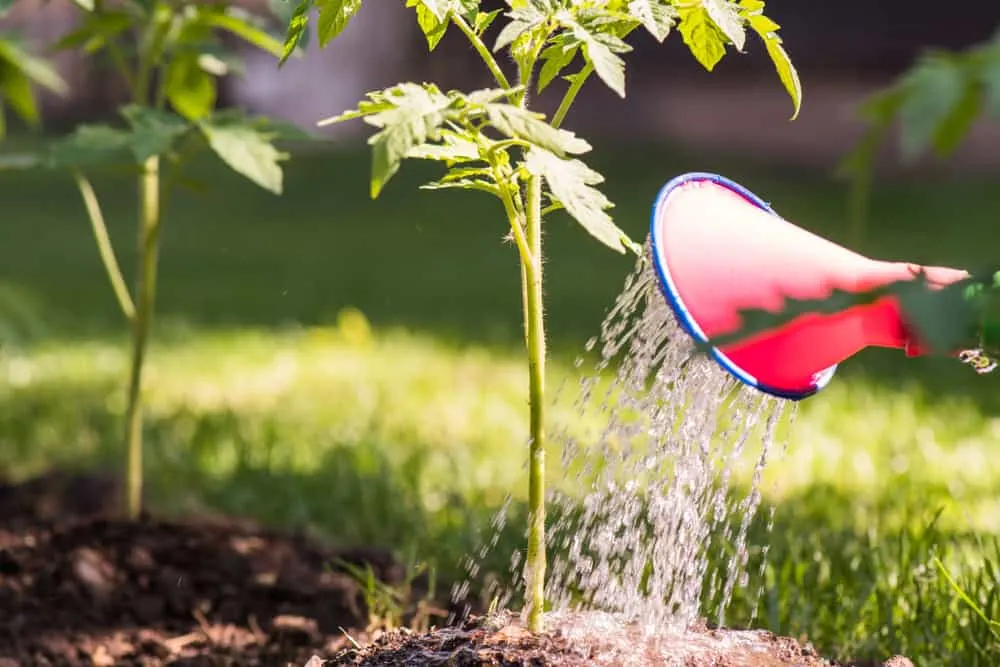
Deep planting may go against the grain in the home gardening world. But when it comes to tomatoes, your plants will thank you for it. The extended root system will only help grow and strengthen your plant, allowing for a successful, delicious harvest at the end of the season.

